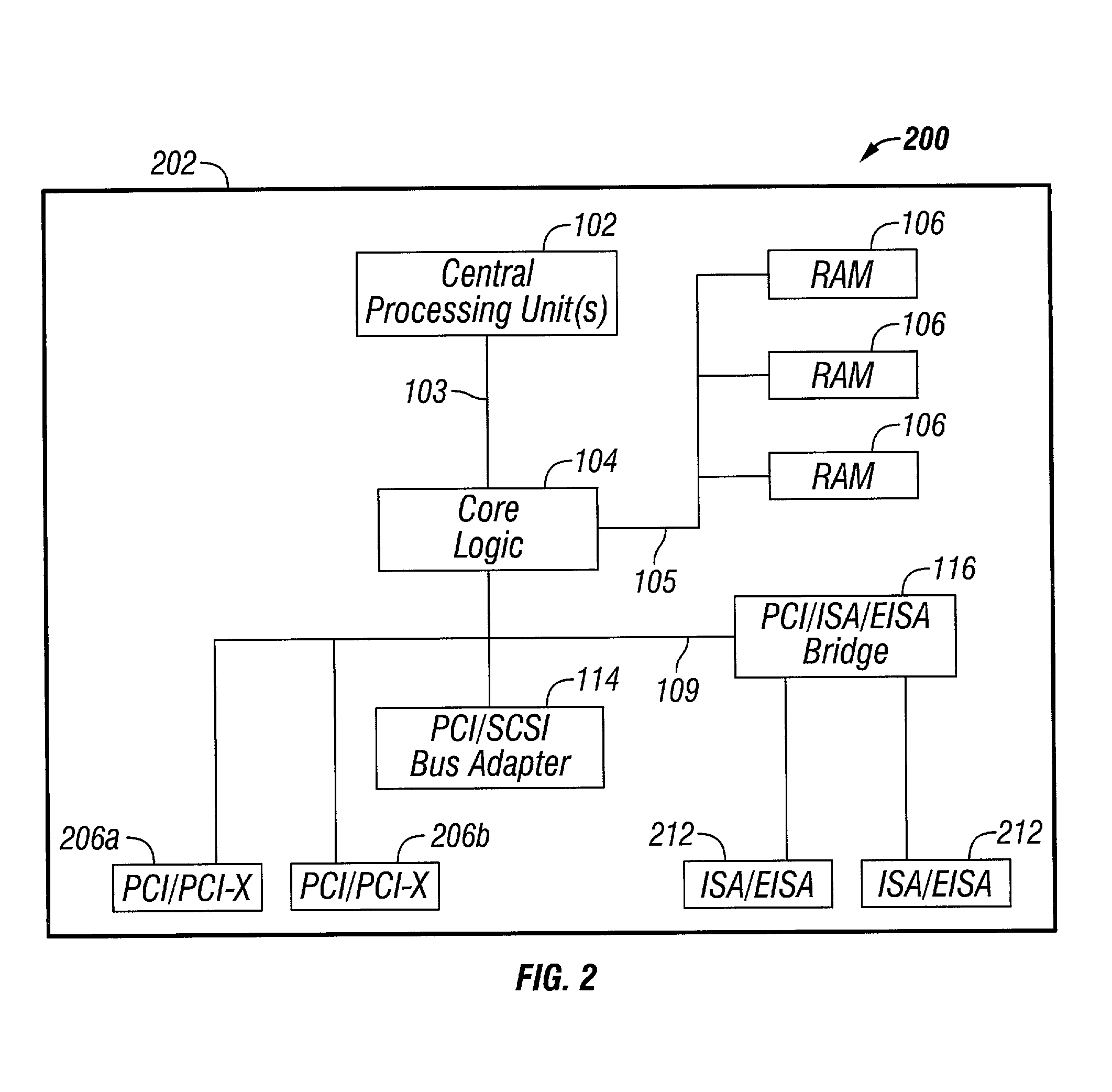Distributed peer-to-peer communication for interconnect busses of a computer system
a computer system and interconnect bus technology, applied in the direction of instruments, electric digital data processing, etc., can solve the problems of increasing processor overhead, increasing memory usage requirements, and not enabling devices to communicate with each other
- Summary
- Abstract
- Description
- Claims
- Application Information
AI Technical Summary
Benefits of technology
Problems solved by technology
Method used
Image
Examples
Embodiment Construction
[0030]The present invention provides a technique for enhancing the operation of computer system busses that use the extensions to the peripheral component interconnect specification (hereinafter PCI-X busses), as well as logic circuits and signal protocols thereof. For illustrative purposes, embodiments are described herein for computer systems using Intel Corporation microprocessor architectures, and certain terms and references are specific to such processor platforms. PCI-X and the enhancements described herein, however, are hardware independent, and may be used with any host computer designed for this interconnect standard. As will be appreciated by those skilled in the art of computer systems, the disclosed embodiments can be adapted and applied to any computer platform utilizing the PCI-X standard. Further, although the following is described in terms of PCI-X busses, other bus architectures and protocols, such as the 3GIO bus architecture and protocol being promoted by Intel ...
PUM
 Login to View More
Login to View More Abstract
Description
Claims
Application Information
 Login to View More
Login to View More - R&D
- Intellectual Property
- Life Sciences
- Materials
- Tech Scout
- Unparalleled Data Quality
- Higher Quality Content
- 60% Fewer Hallucinations
Browse by: Latest US Patents, China's latest patents, Technical Efficacy Thesaurus, Application Domain, Technology Topic, Popular Technical Reports.
© 2025 PatSnap. All rights reserved.Legal|Privacy policy|Modern Slavery Act Transparency Statement|Sitemap|About US| Contact US: help@patsnap.com



